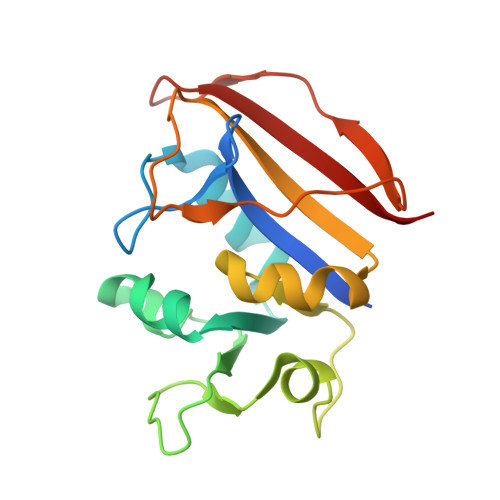Rational Exploration of 2,4-Diaminopyrimidines as DHFR Inhibitors Active against Mycobacterium abscessus and Mycobacterium avium , Two Emerging Human Pathogens.
Andrade Meirelles, M., Almeida, V.M., Sullivan, J.R., de Toledo, I., Dos Reis, C.V., Cunha, M.R., Zigweid, R., Shim, A., Sankaran, B., Woodward, E.L., Seibold, S., Liu, L., Mian, M.R., Battaile, K.P., Riley, J., Duncan, C., Simeons, F.R.C., Ferguson, L., Joji, H., Read, K.D., Lovell, S., Staker, B.L., Behr, M.A., Pilli, R.A., Counago, R.M.(2024) J Med Chem 67: 19143-19164
- PubMed: 39468773
- DOI: https://doi.org/10.1021/acs.jmedchem.4c01594
- Primary Citation of Related Structures:
7K6C, 8F80, 8F81, 8F82, 8F83, 8F84, 8F85, 8TA0, 8TA1, 8TBR - PubMed Abstract:
Nontuberculous mycobacteria (NTM) are emerging human pathogens linked to severe pulmonary diseases. Current treatments involve the prolonged use of multiple drugs and are often ineffective. Bacterial dihydrofolate reductase (DHFR) is a key enzyme targeted by antibiotics in Gram-negative bacterial infections. However, existing DHFR inhibitors designed for Gram-negative bacteria often fail against mycobacterial DHFRs. Here, we detail the rational design of NTM DHFR inhibitors based on P218 , a malarial DHFR inhibitor. We identified compound 8 , a 2,4-diaminopyrimidine exhibiting improved pharmacological properties and activity against purified DHFR, and whole cell cultures of two predominant NTM species: Mycobacterium avium and Mycobacterium abscessus . This study underscores the potential of compound 8 as a promising candidate for the in vivo validation of DHFR as an effective treatment against NTM infections.
Organizational Affiliation:
Department of Organic Chemistry, Institute of Chemistry, University of Campinas, UNICAMP, 13083-970-Campinas, SP, Brazil.
















